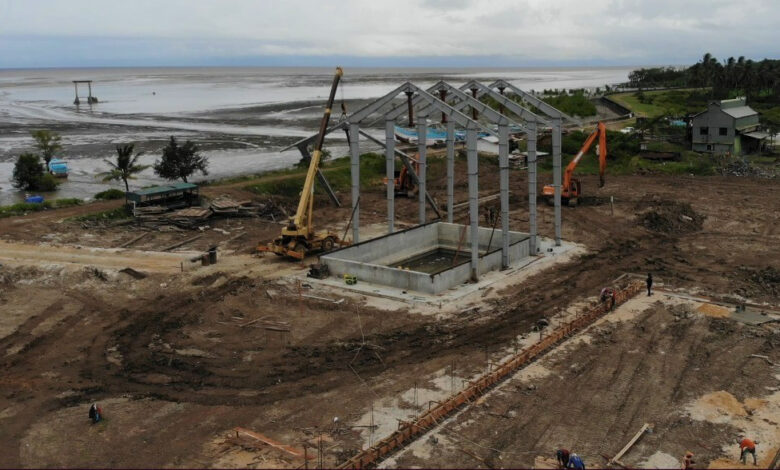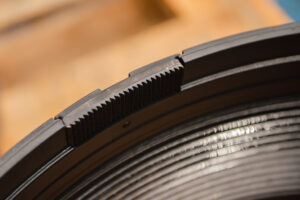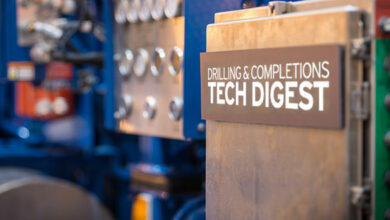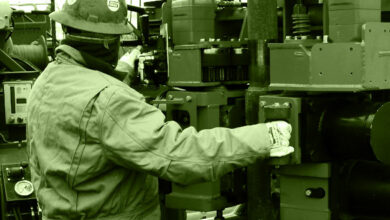People, Companies and Products

NOV acquires ADS to offer integrated MPD solutions
NOV recently acquired the Advanced Drilling Solutions (ADS) business of AFGlobal.
With this acquisition, NOV will be able to offer MPD packages with add-on services from its larger technology portfolio, including NOVOS and real-time monitoring, delivering full rig integration. Additionally, the company’s full MPD system will be integrated with its wired pipe and Max platform.
Mark Mitchell, who had served as President of Oil and Gas for AFGlobal, is now Senior Vice President of MPD for NOV.
LYTT, Weatherford sign collaboration agreement
LYTT and Weatherford have signed a collaboration agreement combining the former’s proprietary sensing insights with the latter’s expertise in distributed fiber-optic sensing. Together, the companies will deliver ForeSite Sense, Powered by LYTT.
Jindal, Hunting to build premium OCTG threading plant in India
Jindal SAW has formed a joint venture (JV) with Hunting Energy Services to create India’s first premium OCTG threading facility in Nashik, India.
The 130,000-sq-ft facility will enable India to supply OCTG products globally, providing an alternative source of OCTG products to companies engaged in drilling activities. In particular, the project aims to fill a gap in the US market for premium OCTG, accessories and chrome OCTG supplies.
The facility is targeted to be operational by the end of 2022, with three threading lines commissioned over time and an annual capacity of 50,000 metric tons.
Data Gumbo opens office in Saudi, signs contract with Equinor
Data Gumbo recently launched an office in Khobar, Saudi Arabia, aiming to accelerate regional traction with leading industrial enterprises.
In August 2021, Data Gumbo closed $7.7 million in Series B funding with continued participation from Saudi Aramco Energy Ventures, the corporate venture capital fund of Aramco Ventures. The funding has allowed Data Gumbo to expand global operations and enable accurate, on-time and automated invoicing and payments in additional use cases and verticals.
The company had also recently signed a contract with Equinor to use GumboNet across the operator’s drilling and well services category. Rollouts will begin in the Norwegian Continental Shelf.
ADNOC awards $1.94 billion in wireline, perforation deals
Abu Dhabi National Oil Company (ADNOC) recently announced framework agreement awards valued at $1.94 billion for wireline and perforation services. The awards – given to ADNOC Drilling, Schlumberger, Halliburton and Weatherford – cover ADNOC’s onshore and offshore fields.
eDrilling, ACE to provide AI solution for well construction
eDrilling and Automatic Control Engineering (ACE) have announced a partnership to develop AI-based drilling technologies for E&P companies in Southeast Europe. The companies will collaborate to help operators better plan, perform and optimize drilling operations using AI, machine learning and predictive analytics solutions, along with automation.
Enteq launches new center to grow directional drilling tool
Enteq Technologies has opened its new technology center in Andoversford, UK, to support continued development of its SABER tool, an alternative to traditional rotary steerable systems (RSS) for directional drilling. The company recently conducted downhole and system testing of the technology and plans full commercialization later this year.
New training center to help build workforce in Guyana
A venture between 3t EnerMech and Orinduik Development Training Center aims to deliver Guyana’s first in-country, state-of-the-art training facility for the local oil and gas workforce.
The center will combine in-classroom training facilities, blended learning software and technology, and fully immersive simulators.
Located in Lusignan, the center is set to become the first regional Engineering Construction Industry Training Board-accredited training provider in Guyana. It will also deliver the country’s first OPITO-approved Basic Offshore Safety Induction and Emergency Training certification. Further, it will deliver scenario-based firefighting emergency response training.
Waukesha achieves new ISO 45001:2018 certification
Waukesha Magnetic Bearings has achieved ISO 45001:2018 Occupational Health & Safety (OH&S) Management Systems Certification. The new standard is used to establish an effective OH&S management system for preventing work-related injury and illness and for proactively improving health and safety performance.
Daniels named to new sustainability role at Shell
Shell has appointed Ed Daniels to the new role of Strategy, Sustainability and Corporate Relations Director. Mr Daniels has held roles in Shell’s Upstream, Integrated Gas, Downstream and Projects & Technology businesses.
Trelleborg promotes Castleman to M&A Director
Trelleborg Sealing Solutions has appointed Heather Castleman as Director, Mergers and Acquisitions (M&A) for Marketing Americas Industrial. She will also continue in her current role as Senior Director, Strategy and Marketing for Marketing Americas.
McDermott names McKelvy as new President, CEO
Michael McKelvy has been named President and CEO of McDermott. Lee McIntire, who had been serving as interim CEO since June 2021, will continue as a member of McDermott’s Board of Directors.
OEG signs distribution agreement with Blue Manta
OEG Offshore has announced an exclusive distribution agreement with well completion installation solutions provider Blue Manta International. The agreement covers Blue Manta’s full range of packaged completion equipment across the Americas, Middle East, Africa and Asia Pacific regions.
IFS announced that Borr Drilling is upgrading its existing IT platforms to IFS Cloud, IFS Cloud Services and IFS Success Services, connecting data across the contractor’s maintenance, supply chain and finance functions.
PRODUCTS
 New frac plug, data analytics tool aim to improve frac efficiency
New frac plug, data analytics tool aim to improve frac efficiency
GEODynamics recently launched a pair of tools that it says will help companies to improve productivity and efficiency at the frac site. The StageCoach data analytics system is designed to ensure uniform proppant distribution from cluster to cluster, integrating computational fluid dynamics modeling of proppant slurry movement with full-scale proppant transport surface test results into an engineering model. Meanwhile, its EVOLV composite frac plug reduces performance variables in horizontal completions by employing a shear ring design that can eliminate potential leak paths, erosion and pressure loss.
DC’s Stephen Whitfield spoke with Santo Petitto, Sales Manager, and Steve Baumgartner, Senior Technical Advisor, to discuss the technologies at the 2022 SPE Hydraulic Fracturing Technical Conference in February.
Click here to watch the video interview with GeoDynamics.
 Tenaris eliminates manual operations with connector’s anti-rotational keys activation
Tenaris eliminates manual operations with connector’s anti-rotational keys activation
Tenaris has launched the Automatic Anti-Rotational Keys (AARK) for its BlueDock premium weld-on connector, eliminating all manual operations associated with the anti-rotational keys activation. This is expected to reduce risks and improve running speeds.
When not in use, the system occupies a fraction of the well site or deck space required for a standard slickline winch unit and PCE package.
Pre-installed at Tenaris’ manufacturing facilities and designed to allow multiple activations, the AARKs provide extra assurance against the connector’s break-out. In addition to the automatic and hands-free activation, the technology does not require special tools for removal.
Lloyd’s Register updates AllAssets asset management software
Lloyd’s Register is rolling out AllAssets 3.0, which allows businesses to quantify their risk exposure and prescribe effective inspection and maintenance plans. The cloud-based software has helped customers reduce risk of failure by up to 95%. It also aims to eliminate data siloes and increase asset performance while optimizing inspection costs across assets. This latest update includes increased inspection data capability and tracking, improved data transfer to enhance usability of the risk-based inspection modules, and an updated security setup.
Flow diagnostics platform targets horizontal wells
TGT Diagnostics has launched its Horizontal Flow diagnostics platform with Cascade3 technology. Designed for horizontal wells, it uses temperature and other well system data to model continuous reservoir flow profiles. This capability provides asset teams with realistic flow modeling and accurate continuous flow profiles in a variety of completion and reservoir settings, including fractured formations.
Web-based tool helps to calculate carbon footprint
McDermott International launched ArborXD, a web-based tool that provides data collection, estimation and reporting on the potential carbon impact of energy facilities before construction begins. The tool offers access to lifecycle footprint estimates, cost trade-off analyses, emission reduction pathways and environmental impact assessments. It can be applied throughout the project life cycle, including concept to procurement to construction and installation.




